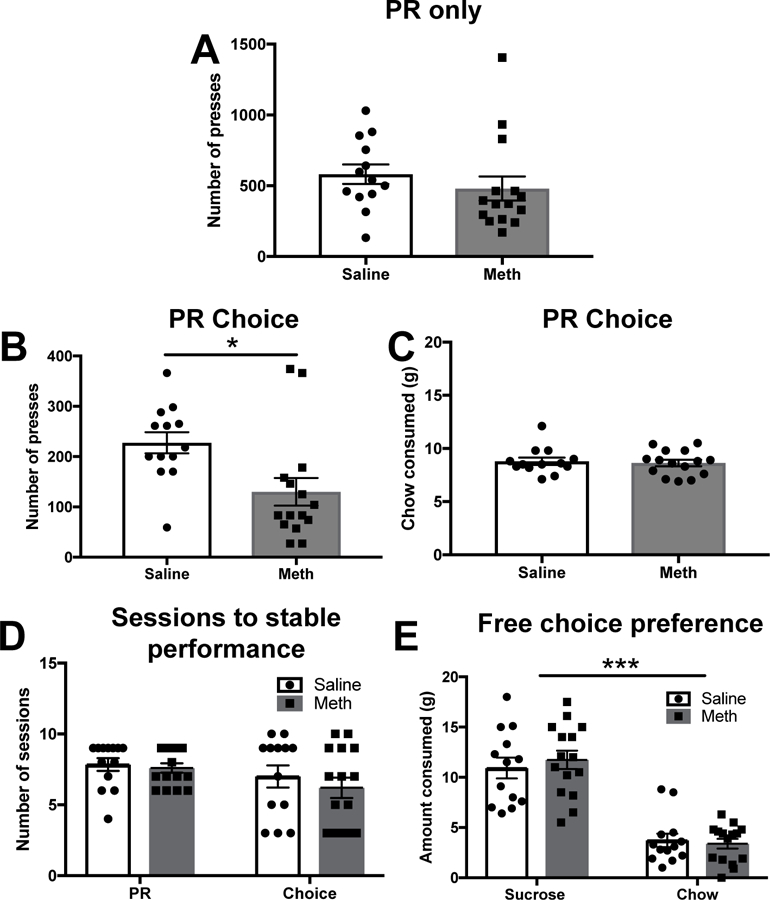Fig. 3.

Effects of meth IVSA withdrawal on effort for food rewards. (A) Number of lever presses for sucrose pellets on the last of the three stable PR testing sessions in yoked saline and meth IVSA groups. Groups did not differ in the number of lever presses on the PR schedule. (B) Number of lever presses for sucrose pellets on the last of the three stable choice testing sessions in yoked saline and meth IVSA groups. Meth exposed animals emitted fewer lever presses compared to yoked saline controls (p < 0.05). (C) Amount of chow consumed on the last of the three stable choice testing sessions in yoked saline and meth IVSA groups. Groups did not differ in the amount of chow they consumed. (D) Number of sessions required to reach stable performance on the PR and choice tasks in yoked saline and meth IVSA animals. Groups did not differ in the number of sessions required to reach stable performance on either schedule. (E) In the free choice control task where both options were freely available, both groups preferred the sucrose pellets to the lab chow (p < 0.001). Points denote mean ± SEM, *p < 0.05, ***p < 0.001.
